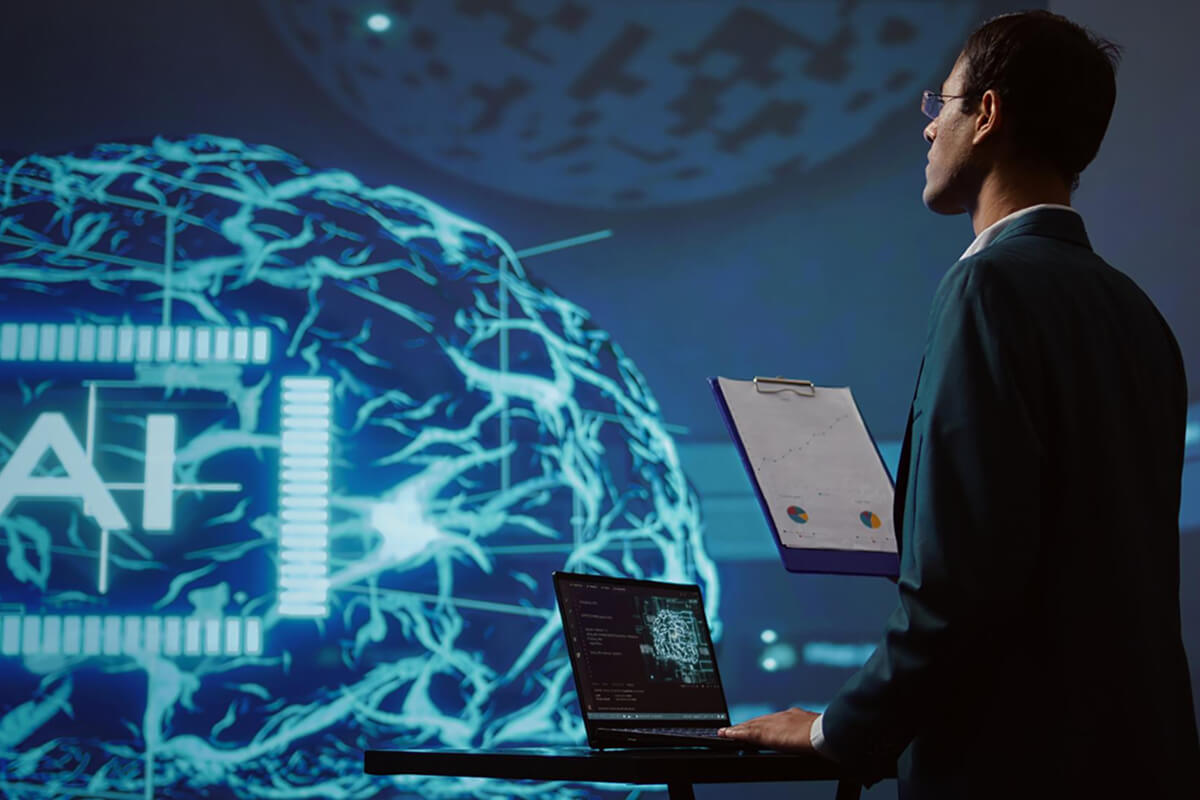AI and Large Language Models: The New Architects of Tomorrow’s Digital World
Imagine a library with every book ever written, every conversation recorded, and every idea documented. As you step inside, an invisible guide helps you find exactly what you’re looking for—whether it’s a poetic phrase, a business solution, or a translation of an ancient text. This library is a metaphor for Artificial Intelligence (AI), and at its center are Large Language Models (LLMs), the technology that’s transforming our world.
What Are Large Language Models?
Large Language Models are like master linguists in the digital world. They’ve spent years learning the language of our world—its grammar, rhythm, and patterns—by reading millions of documents. Built with advanced neural networks, these models understand and generate human language in ways that once seemed impossible.
Think of them as skilled musicians who compose music by recognizing patterns. LLMs do the same with words, arranging them meaningfully. They fuel many applications we use today, from chatbots to summarization tools. Some common ways LLMs assist us include:
- Writing stories: LLMs can generate narratives similar to those by seasoned authors.
- Conversing naturally: They respond with human-like dialogue.
- Translating cultures: LLMs don’t just translate words but capture ideas and emotions between languages.
- Summarizing with precision: They break down complex information into concise text.
- Detecting sentiment: They gauge tone, helpful in understanding customer feedback or trends.
Why Do LLMs Matter for Businesses?
If LLMs are architects, then businesses are the cities they help design—creating smarter, faster, and more efficient systems. Integrating LLMs into business processes is like hiring a round-the-clock consultant. They process data and provide solutions at lightning speed.
- Automating with Precision: LLMs can draft proposals, generate reports, and even answer customer questions—all with minimal supervision. They’re like tireless assistants, always on hand to create and respond.
- Creating Engaging Experiences: LLM-powered chatbots and virtual assistants do more than respond; they create personal, thoughtful interactions tailored to each customer.
- Revealing Insights: LLMs can analyze huge amounts of data, such as reviews and emails, to uncover patterns and insights. Imagine a skilled detective who spots trends that would otherwise go unnoticed.
- Boosting Creativity: LLMs inspire by offering fresh ideas. They brainstorm product names, suggest marketing slogans, and even draft ad copy. It’s like having a creative team that never runs out of ideas.
Challenges and Ethical Considerations
However, with such power, there are responsibilities. Like any powerful tool, LLMs need careful handling. They reflect the data they learn from, which can sometimes carry biases. Think of them as mirrors; they can reveal both the good and the bad.
Ethical use is essential. Businesses must monitor for bias, protect privacy, and maintain transparency in how they use these models. Just as an architect considers safety, we must think about AI’s broader impact on society.
Another consideration is sustainability. Training LLMs requires substantial energy, much like building a skyscraper. As LLM technology grows, companies are exploring energy-efficient options to reduce its environmental footprint.
The Road Ahead: Building the Future Together
Looking forward, LLMs and AI will continue to reshape industries. From personalized healthcare to automated legal services, these models are sketching a future that transforms traditional processes. But, like any good blueprint, it requires human input—our creativity, ethics, and vision of what technology can achieve.
For businesses, the question is no longer “Should we use AI?” but rather “How can we best use it?” Embracing LLMs today is like laying the foundation of a skyscraper that will define tomorrow’s skyline. With ambition and care, we can ensure that this new world we build is one where technology and humanity thrive together.
Conclusion
Large Language Models are more than just powerful AI; they’re the architects of a new era. They help businesses automate, innovate, and create with ease. But, like any tool, they need careful, ethical use. By embracing LLMs, companies can lead the digital revolution and build not just smarter systems, but a brighter future.








